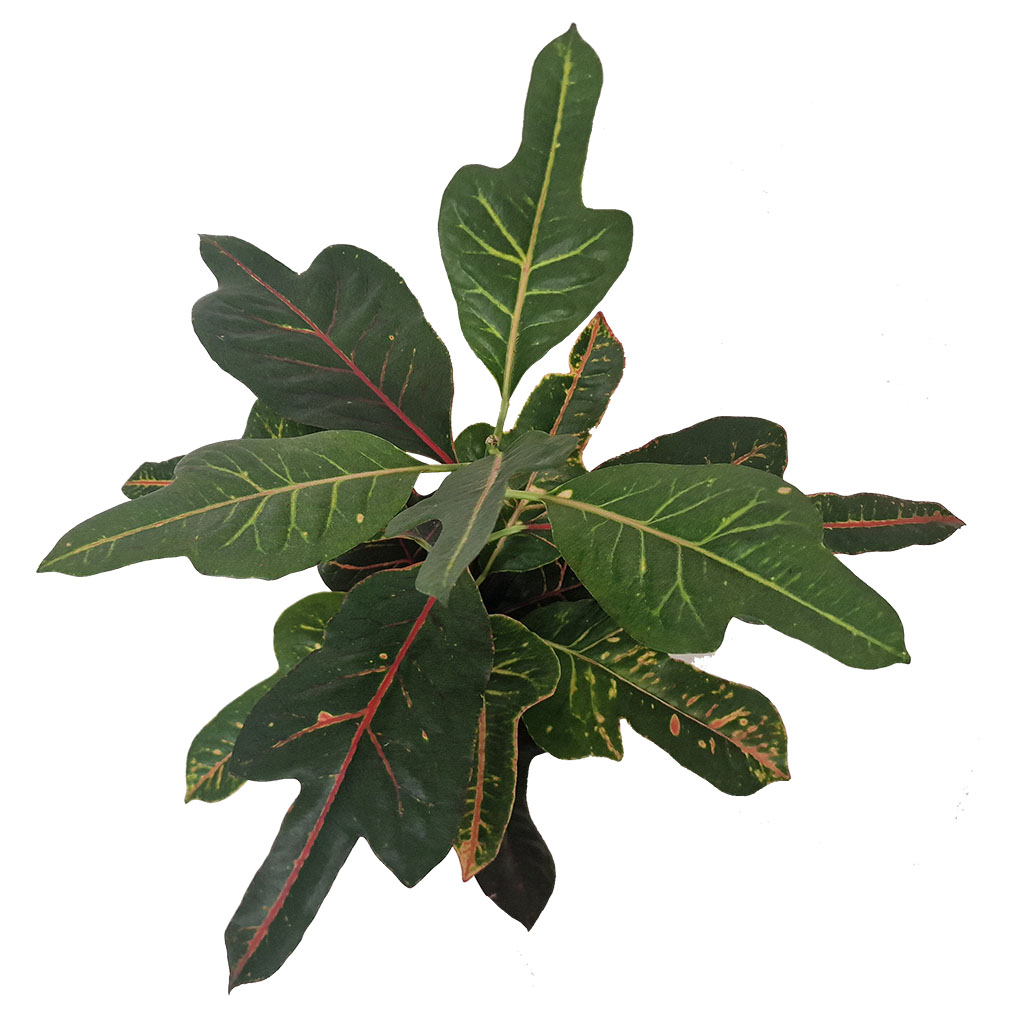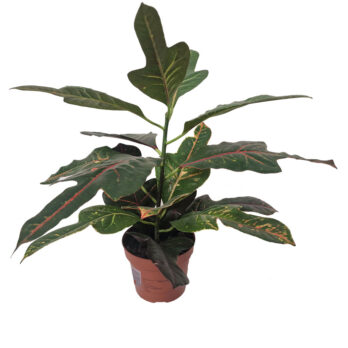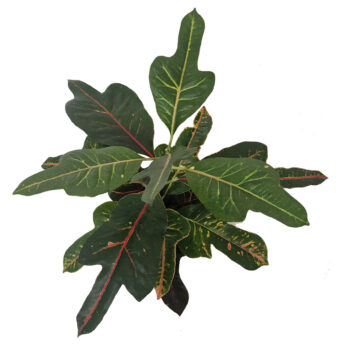Foliage: Croton leaves are large, leathery and can vary in shape from oval to lanceolate. The most striking thing about this plant is the variation in leaf colours, which can include yellow, orange, red, green and even purple, often in highly decorative patterns that stand out.
Size: Croton can grow up to 1.5 metres tall when grown in ideal conditions, making it a standout plant in any space.
Flowers: Its flowers are small and white or pale yellow in colour. They're not usually the plant's main attraction, but it's the leaves that really catch the eye.
Light: Croton prefers bright direct or indirect light to keep its colours vibrant. In low-light environments, the colours can dull and the plant can become more spongy.
Watering: The soil should be kept evenly moist, but avoid waterlogging. Watering can be adjusted according to the humidity of the environment and the temperature.
Humidity: Croton appreciates environments with high humidity. In dry climates, it can be beneficial to spray the leaves regularly.
Temperature: The plant grows best at temperatures between 15°C and 30°C. Avoid exposing Croton to cold draughts as this can stress the plant.
Decoration: It's an excellent choice for anyone looking to add a splash of colour to interiors or gardens. Its vibrant, tropical look is much appreciated in spaces such as homes, offices and outdoor areas.
Air QualityLike many indoor plants, Croton also helps to purify the air, making it a beneficial addition to the environment.
It's important to be careful when handling Croton, as its sap can cause irritation in some people. With the right care, Croton can be an outstanding plant, with its colourful leaves brightening up and beautifying any space.
*Note: Images are for illustrative purposes only. Plants may vary in size and appearance.






